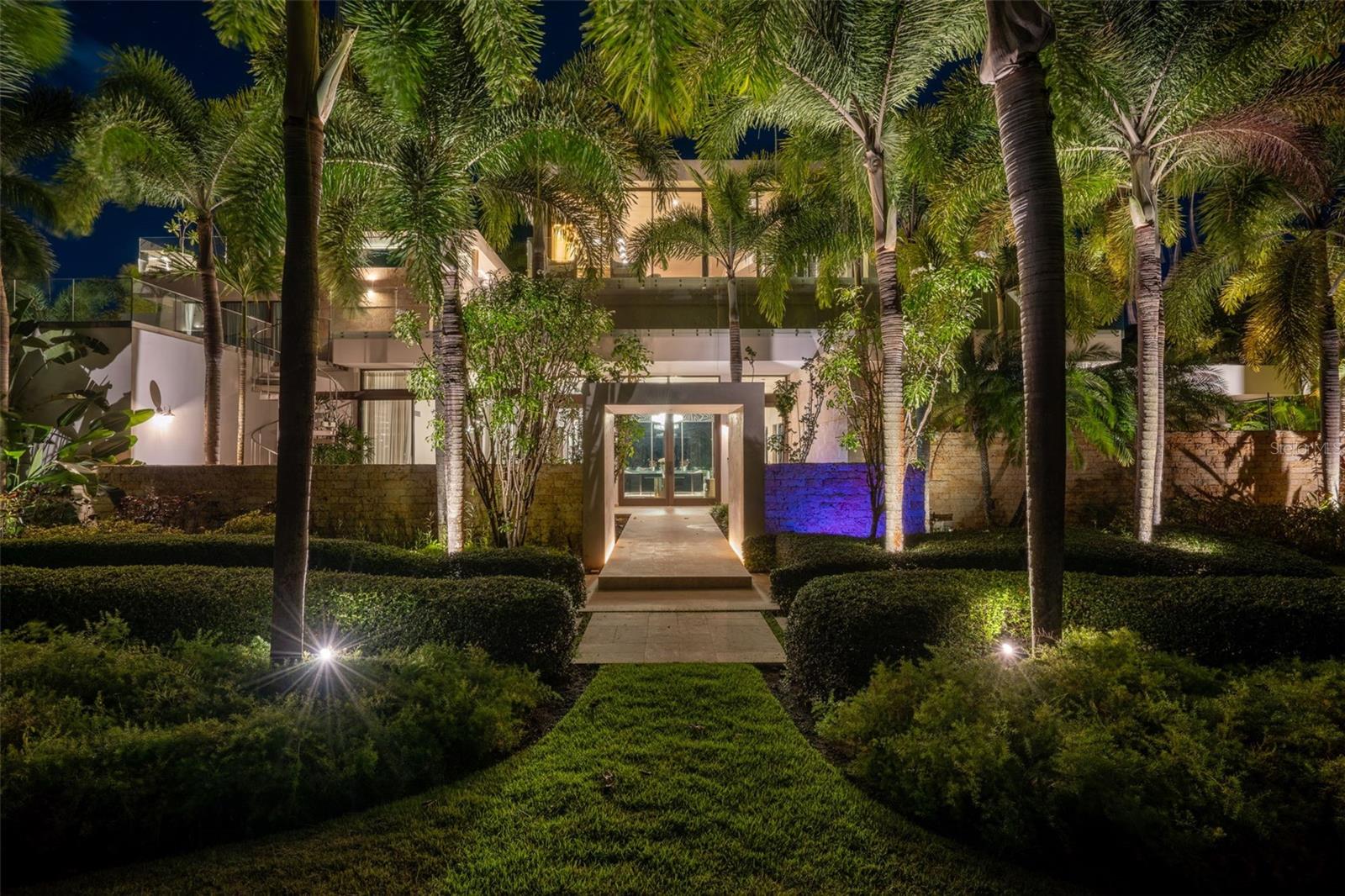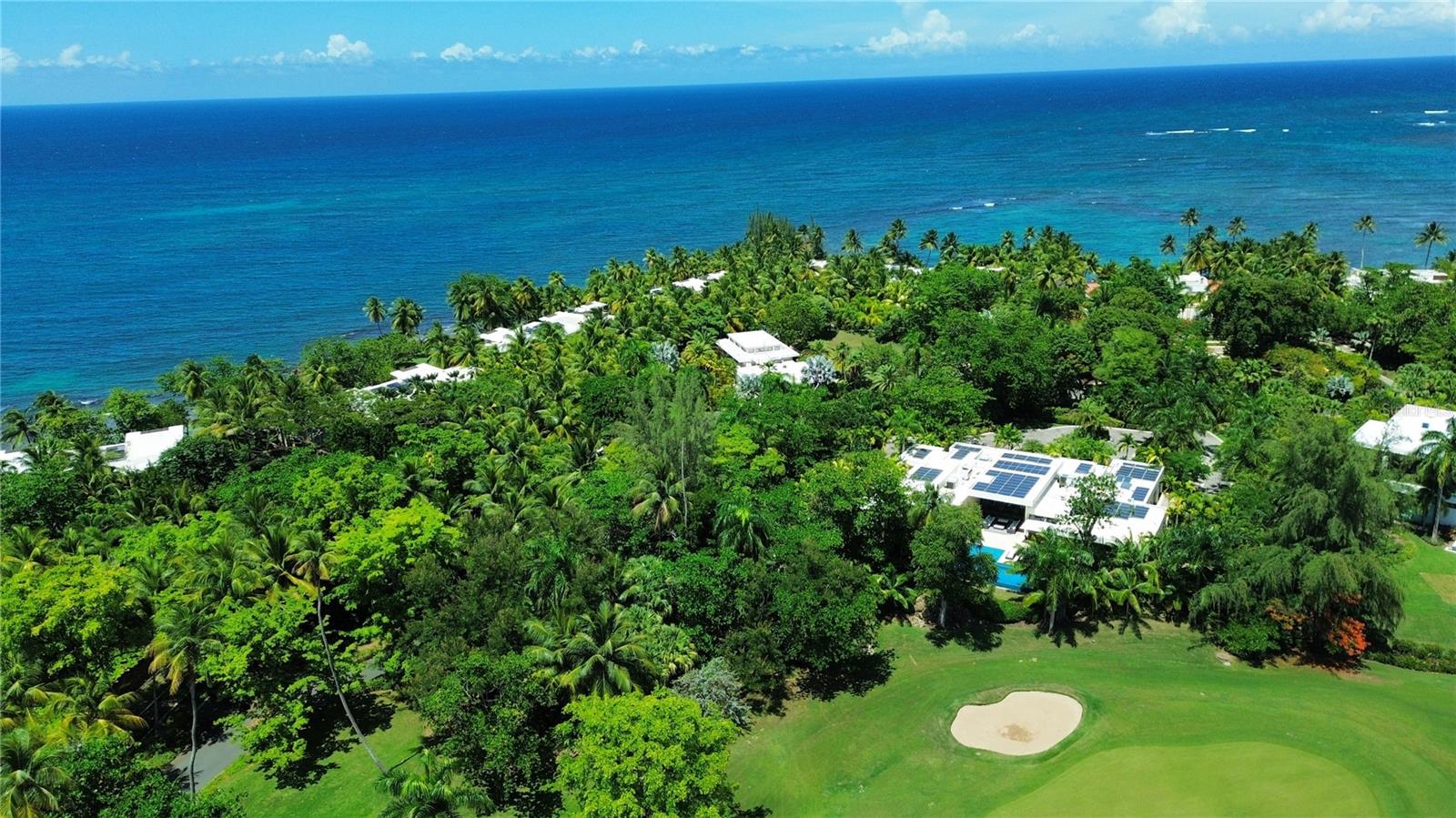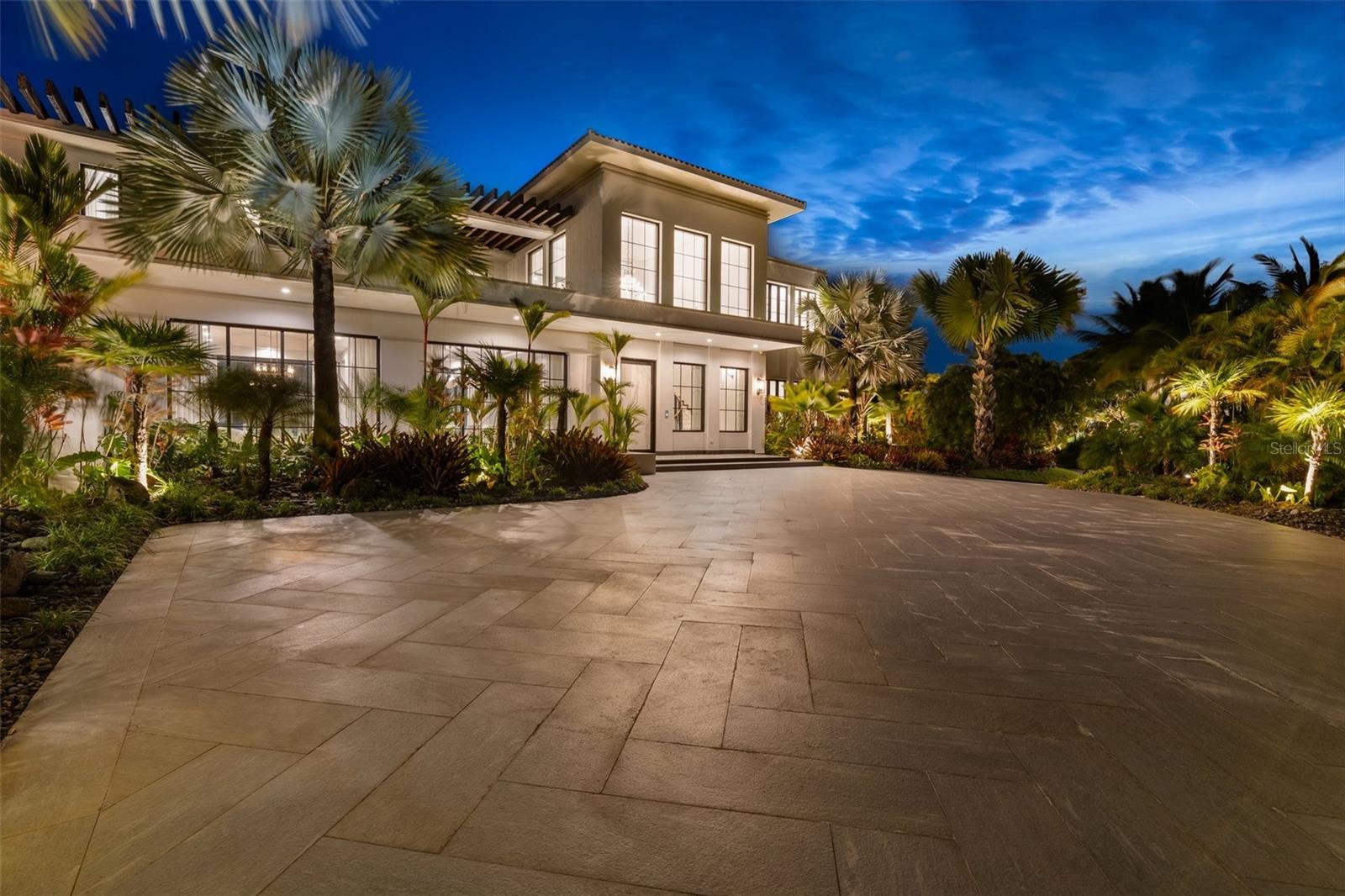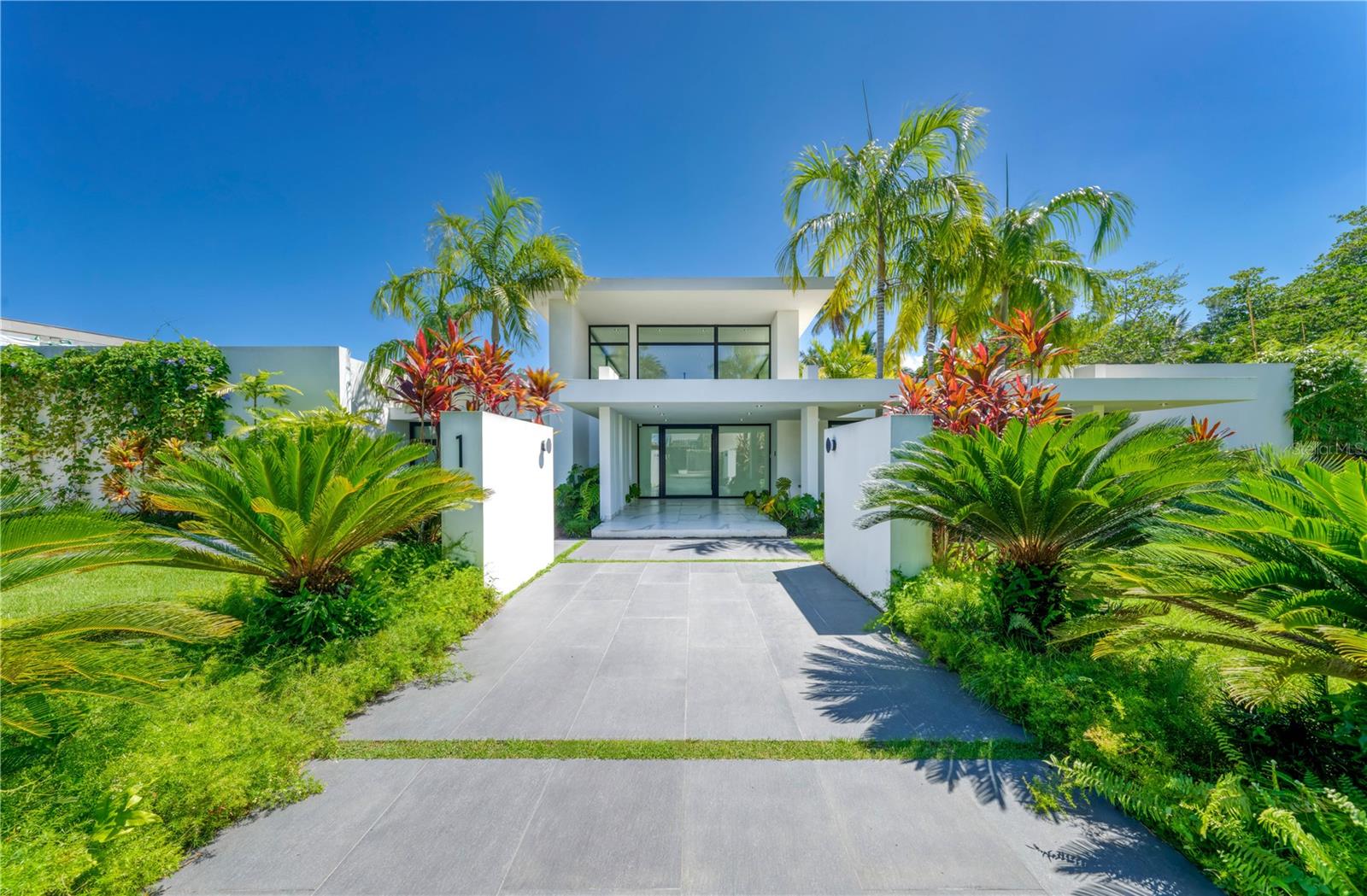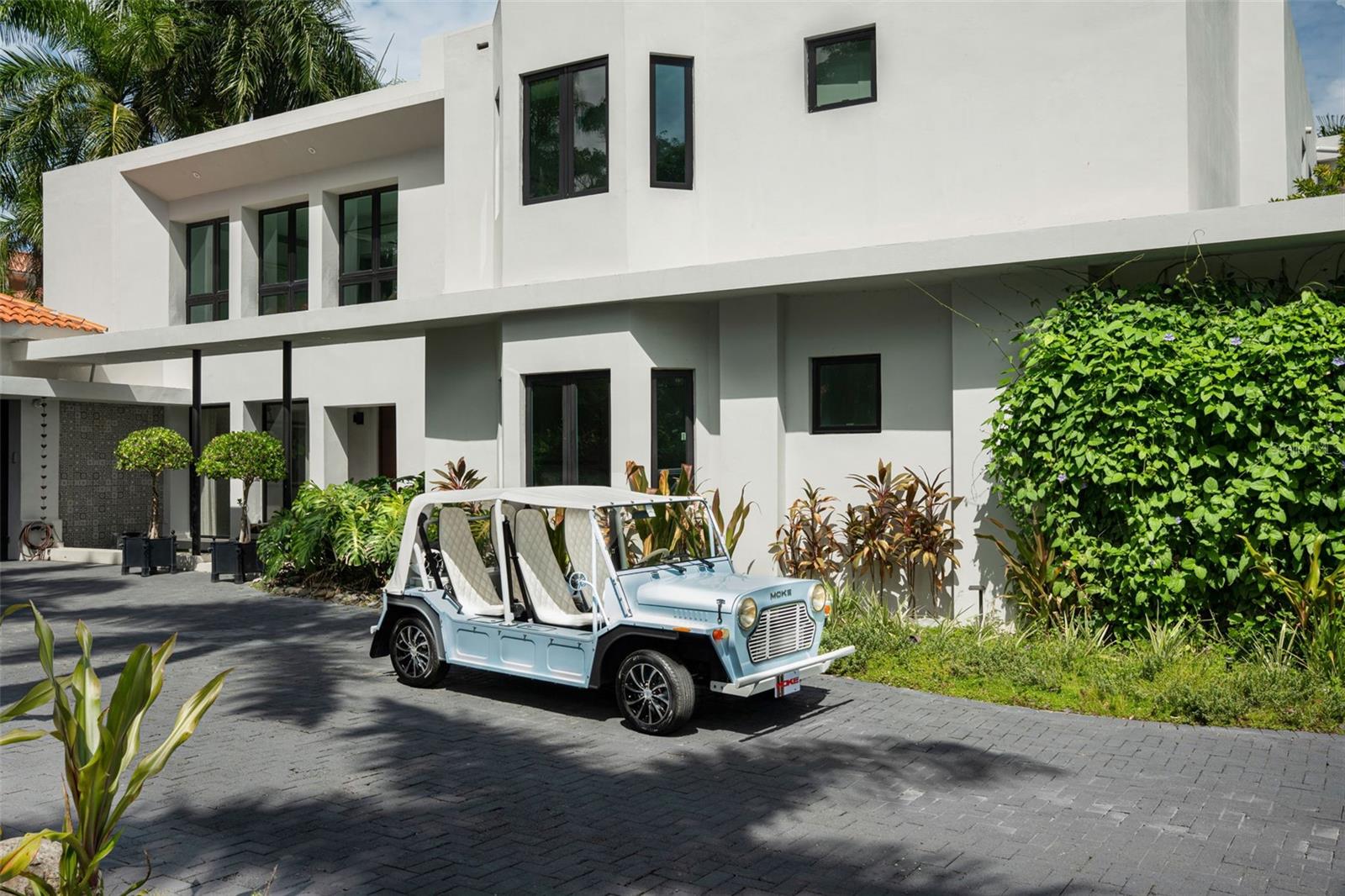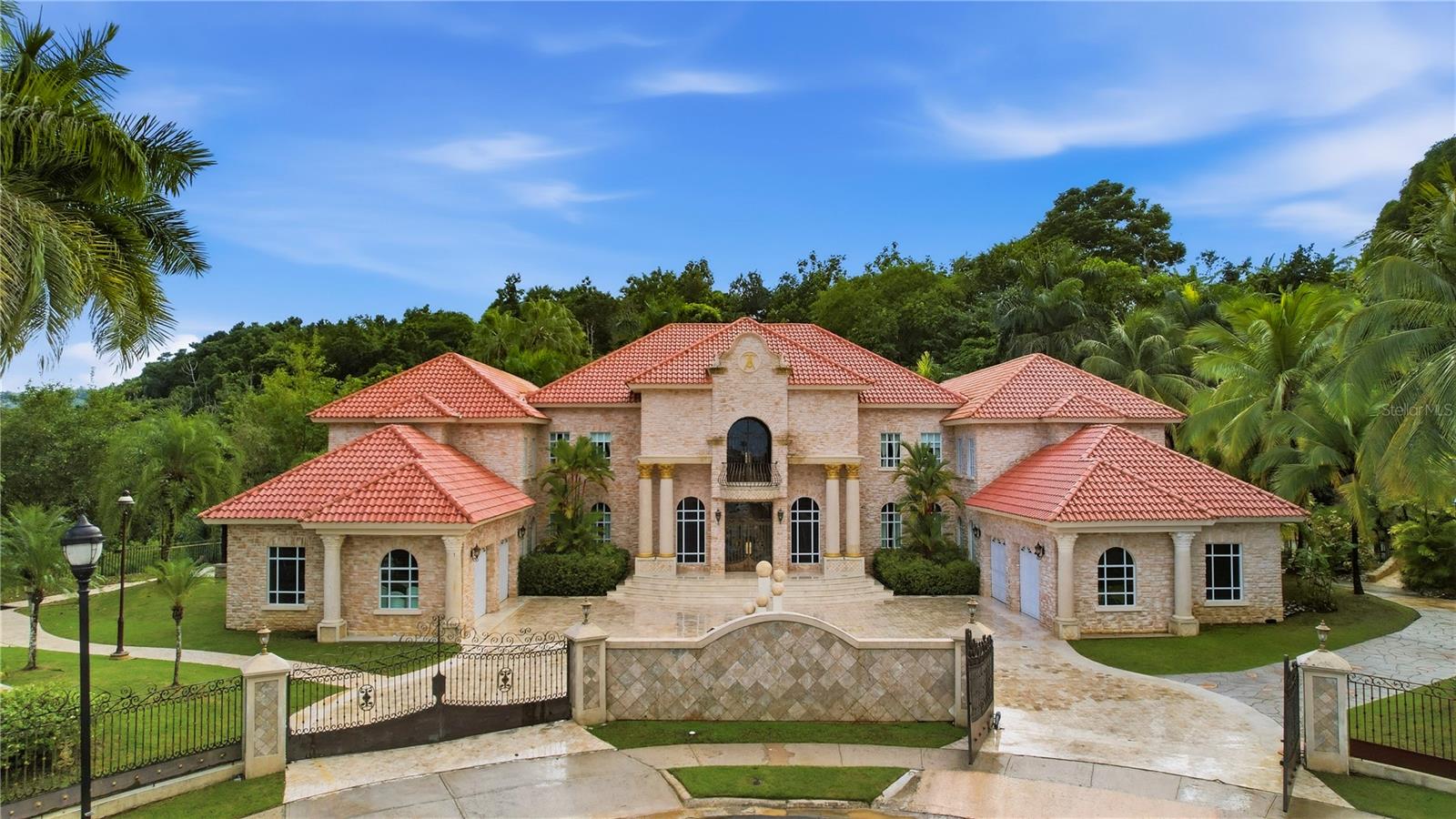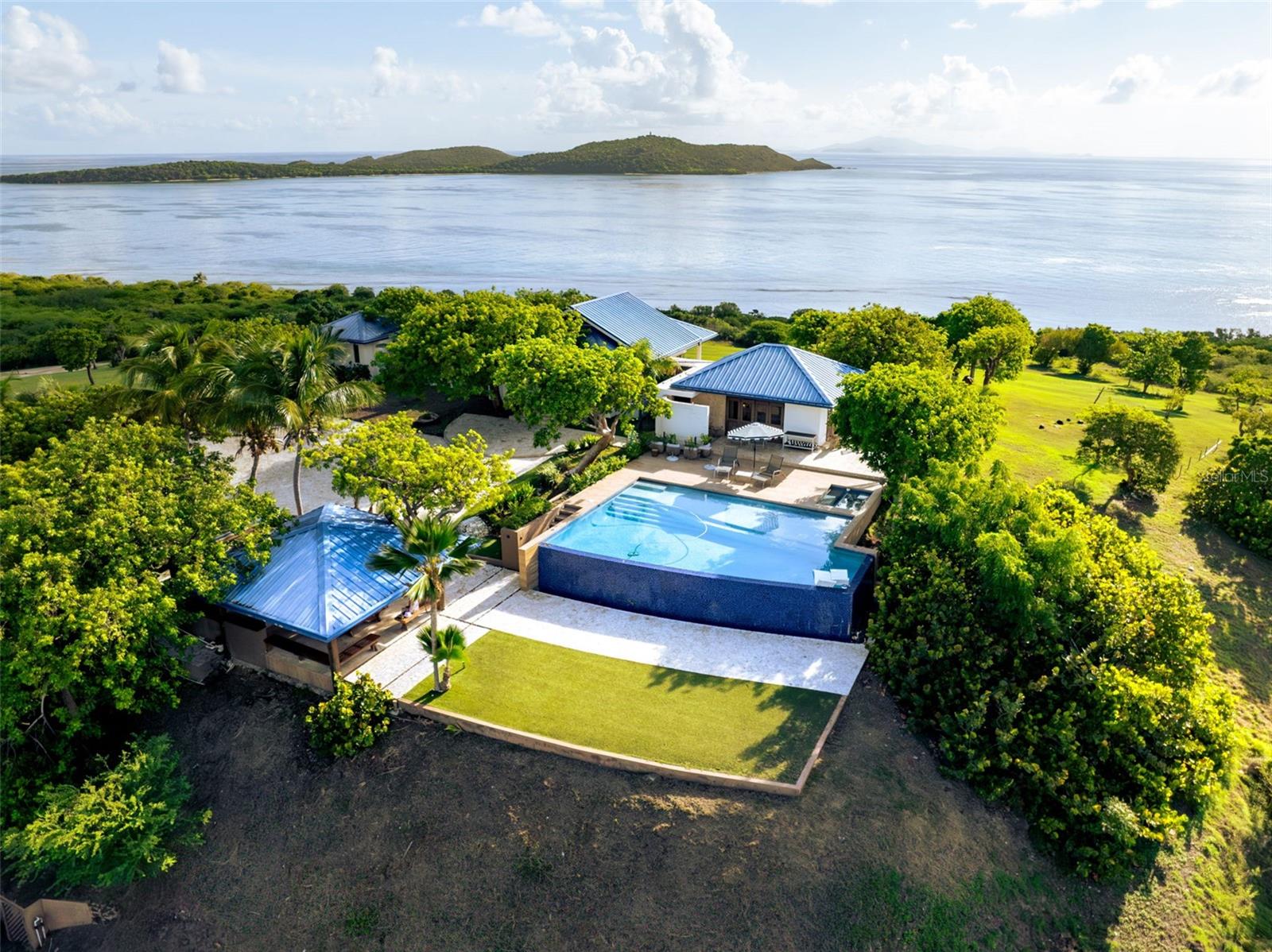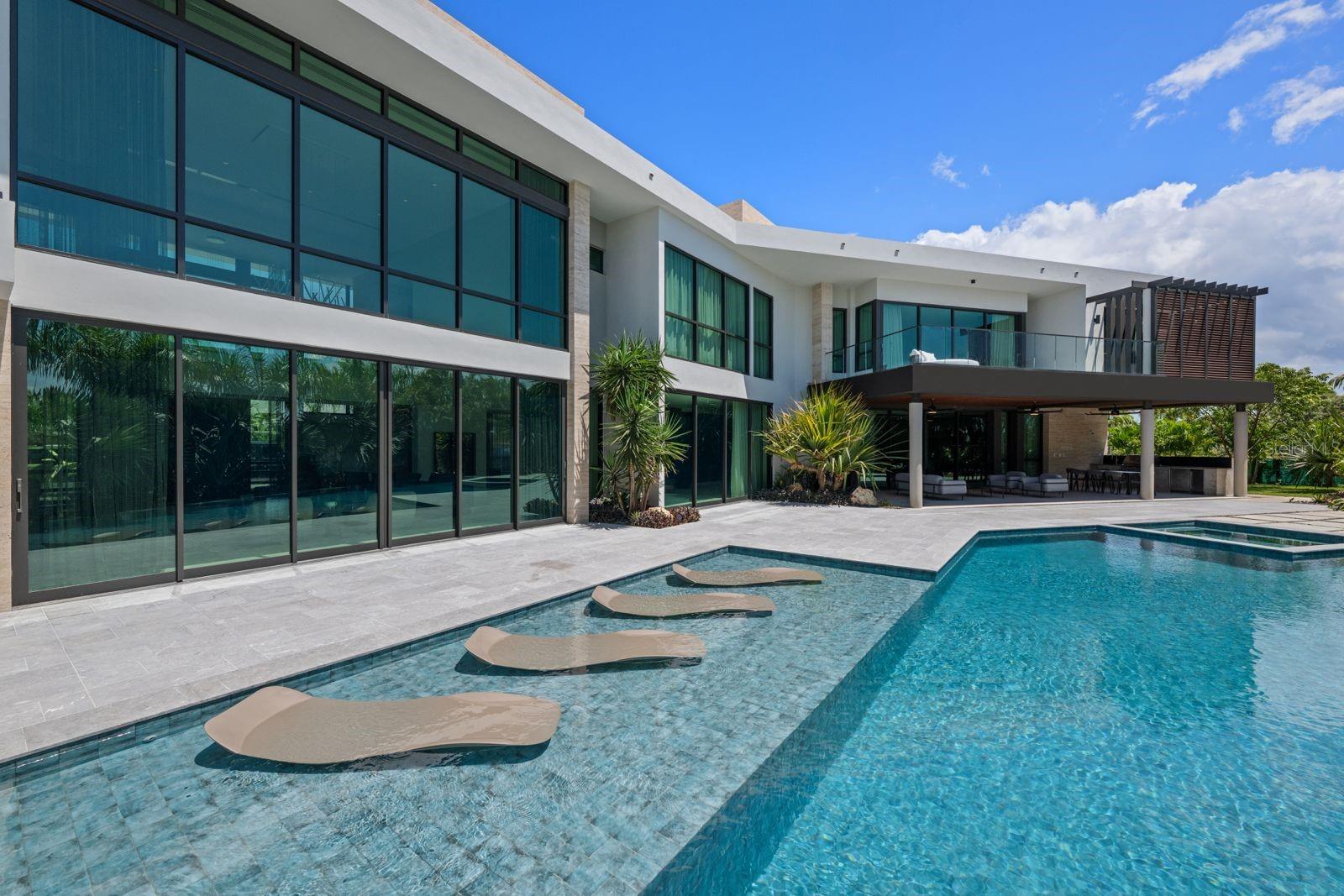Navigating Growth, Incentives, and Sector-by-Sector Trends for Successful Commercial Real Estate Investments
Puerto Rico’s Commercial Real Estate (CRE) market stands at the nexus of opportunity and complexity, drawing interest from a growing cohort of international investors, local entrepreneurs, and seasoned developers. Macro-level factors, such as the island’s strategic location for Caribbean trade and robust tourism sector, converge with powerful tax incentives like Act 60 (ACT 60 Guide) to create a uniquely appealing environment. Yet, the picture is not without its challenges: aging infrastructure, hurricane-related risks, and a banking sector that can be more cautious than its mainland U.S. counterparts.
This comprehensive article gives you a detailed overview of Puerto Rico’s macroeconomic landscape, government incentives, and sector-specific trends—from industrial hubs to luxury hospitality projects. Moreover, we delve into how our firm can assist at each step—whether it’s identifying prime locations, navigating local regulations, or crafting innovative financing solutions. We believe bridging the gap between opportunity and execution demands local expertise, a nuanced understanding of incentives, and proactive risk management.
Macroeconomic Environment and Post-Hurricane Resilience
A Record of Economic Shocks and Recoveries
Puerto Rico’s modern economy has been shaped by a series of disruptions—both natural and financial. The devastation wrought by Hurricanes Irma and Maria in 2017 tested local infrastructure and triggered a wave of outmigration. Yet, from October 2017 to October 2018, new business applications surged by about 225%, indicating a resilient and determined entrepreneurial community. A similar pattern emerged from April 2020 to April 2021, when applications jumped roughly 150% amidst global pandemic uncertainty. These twin rebounds attest to Puerto Rico’s capacity to adapt and innovate despite adversity.
GDP Forecasts and the Influence of Tourism
Despite these encouraging signs, the Puerto Rico Planning Board tempered its 2024 GDP projection from 2.80% growth to approximately 2.40%. Reasons include ongoing fiscal challenges and a gradual population decline. On the flip side, tourism remains a significant economic driver. In 2024, San Juan’s Luis Muñoz Marín International Airport recorded 6.6 million passenger arrivals—8% higher than the previous year and a notable 41% above 2019. This sustained growth in visitation catalyzes demand in retail, hospitality, and ancillary sectors.
Banking Sector Nuances
Local banks face unique constraints. A combination of higher interest rates, stringent anti-money-laundering (AML) rules, and subdued loan demand has led to stricter underwriting for commercial real estate deals. Nonetheless, the Federal Open Market Committee hints at gradual rate decreases around 2025, which could reignite lending. Investors maintaining strong liquidity and local relationships will likely find the evolving climate an opportunity to secure more favorable terms.
Post-Hurricane Adaptation and Your Partner in Resilience
Hurricanes Irma and Maria highlighted the urgency of resilient construction and robust backup utilities. Indeed, properties incorporating hurricane-resistant design, solar arrays, and reliable generators can attract premium tenants. Our firm maintains a network of architects, engineers, and contractors well-versed in local building codes, ensuring that development or renovation projects meet or exceed modern standards. From conducting feasibility studies to sourcing reputable construction teams, we help mitigate the inherent risks of this market while optimizing assets for long-term stability.
By understanding these macroeconomic and structural drivers—and partnering with professionals who know how to leverage them—you can navigate the complexities of Puerto Rico’s commercial real estate market with greater confidence.
Government Incentives and Tax Breaks
Act 60: Streamlined Benefits
Act 60 represents a powerful consolidation of Puerto Rico’s tax incentives, offering a 4% corporate tax rate on export services and a 0% tax on capital gains, dividends, and interest for eligible residents (Entrepreneur on How Business Leaders Can Thrive in Puerto Rico). These perks have drawn professionals from finance, tech, and beyond, bolstering the island’s shift toward knowledge-based industries. Residency requirements, however, remain strict. Failing to meet statutory on-island days can lead to retroactive tax liabilities.
Opportunity Zones: Federally Driven Development
Nearly the entire island is designated as an Opportunity Zone, allowing investors to defer and reduce capital gains taxes by reinvesting in local development (Investing in Qualified Opportunity Zones in Puerto Rico). These federally backed incentives dovetail with Act 60 benefits, creating a compelling multi-layer approach for investors willing to hold assets over five to ten years. Projects focusing on workforce housing, community revitalization, or mixed-use conversions often find synergy between local and federal programs.
Our Role: Streamlining Incentive Utilization
Securing tax advantages in Puerto Rico calls for meticulous attention to detail. Our company assists by:
- Eligibility Assessment: We evaluate your proposed business or real estate project against Act 60 and Opportunity Zone requirements, ensuring alignment from the outset.
- Legal and Administrative Coordination: We collaborate with top-tier local legal counsel to handle permit filings, annual disclosures, and compliance checks, sparing you the pitfalls of late filings or incomplete documentation.
- Residency and Operational Structuring: Our team advises on establishing local corporate entities, opening bank accounts, and scheduling residency days to preserve your incentives.
Sector-by-Sector Analysis
Industrial Real Estate
- Logistics, Pharmaceuticals, and Prime Submarkets: Puerto Rico’s industrial sector spans about 14.66 million square feet, showing a vacancy rate of roughly 4.8%. Pharmaceutical firms—Johnson & Johnson, Honeywell, and various biotech players—remain a cornerstone, sustained by historic tax incentives. Key submarkets like Bayamón, Cataño, and Carolina excel in distribution connectivity, with proximity to major highways and ports.
- Built-to-Suit Projects and Our Facilitation: From designing temperature-controlled facilities to acquiring specialized permits, industrial projects can be intricate. Our firm can manage built-to-suit developments by integrating local engineering expertise and navigating the environmental impact reviews demanded by Puerto Rican authorities. Beyond compliance, we also help connect you with potential tenants in the pharmaceutical and logistics realms using our established network of local business alliances.
- Risk Mitigation in Industrial: Adhering to modern hurricane codes, acquiring robust insurance, and confirming stable power sources often dictate industrial site desirability. We conduct feasibility studies and coordinate with local utilities to assess feasibility timelines. This approach prevents costly delays during construction and ensures your tenant base can operate seamlessly, even under demanding conditions.
Retail Real Estate
- Tourism-Driven Consumerism: Retail has bounced back swiftly, in part thanks to 6.6 million airport arrivals in 2024. Old San Juan, Condado, and Isla Verde draw significant foot traffic, whereas neighborhoods in metro areas see daily patronage from both locals and Act 60 relocators. Demand for high-end retail, dining, and lifestyle brands has grown, reflecting Puerto Rico’s increasingly affluent demographic segments.
- Our Assistance in Retail Expansion: We offer in-depth market assessments that map out retail demand for specific submarkets. By analyzing tourist patterns, local income levels, and emerging consumer trends, we help identify the right property—whether a smaller boutique concept or a multi-tenant shopping center. We also facilitate lease negotiations, ensuring that contract terms favor your long-term objectives and factor in Puerto Rico-specific variables like power reliability or hurricane insurance clauses.
Data on Lease Rates and Cap Rates: Retail lease rates hover around $24 per square foot annually, with prime tourist zones commanding even higher numbers. Capitalization rates vary by location—top-tier properties may see 6–7%, while secondary markets can push 8% or more. Investors seeking stable, lower-risk returns often target well-established corridors anchored by national chains.
Multifamily Market
Supply Constraints and Localized Demand: While the island’s overall population is shrinking, enclaves such as Dorado and select neighborhoods in San Juan attract investors and Act 60 beneficiaries. Apartments and condos in premium locations can be rented for $1,800/month (studios) up to $7,500/month (four-bed units). Short supply meets steady demand from professionals and families seeking secure, amenity-rich living environments.
Strategies for Multifamily Investors
- Rehabilitation Projects: Upgrading older properties with hurricane-proof windows, advanced networking infrastructure, and shared coworking spaces can justify premium rents.
- Long-Term vs. Short-term Rentals (Short-term Rental Guide): Some owners pivot between month-to-month corporate leases and year-long contracts. We help structure flexible lease solutions that match your cash flow targets while maintaining occupancy.
- Potential Government Partnerships: Government-led incentives occasionally support workforce housing. By aligning with these programs, you can secure tenants and partial subsidies while enhancing the local community.
- Our Multifamily Value-Add: In multifamily deals, we integrate property management solutions that emphasize tenant satisfaction and cost control—vital in an environment where utility disruptions and potential weather events can disrupt routines. Our consulting extends to evaluating a building’s “amenity readiness,” from generator hook-ups to common-area designs appealing to higher-end renters.
Office Market
- Vacancy and Remote-Work Patterns: With the shift toward hybrid work, office vacancies reached about 12.2% in early 2024. Still, Class A towers in Hato Rey or Metro Office Park thrive on traditional banking, legal, and corporate tenants that require a consistent physical presence. The abundance of older buildings invites adaptive reuse, transforming excess office stock into multifamily lofts or mixed-use concepts.
- Landlord Incentives and Our Approach: Given the competition for reliable tenants, we assist landlords in structuring lease incentives—like extended build-out periods or tech-enabled conference rooms—to attract and retain corporate occupiers. For older office buildings, we can coordinate feasibility analyses for partial or total conversions to residential or hospitality uses. Our local architectural and legal partners streamline rezoning applications, ensuring your project adheres to municipal guidelines.
- Community-Centric Office Spaces: Puerto Rico’s smaller offices in suburban areas see stable demand from entrepreneurs seeking coworking solutions outside traditional city centers. By offering flexible lease terms, curated event programming, and strong networking opportunities, owners can tap into the island’s expanding pool of local startups and Act 60 relocators.
Hospitality and Short-Term Rentals
A Growing Travel Mecca
With tourism on a persistent upswing—8% year-over-year passenger arrival growth—hotel occupancies remain robust. Boutique hotels and short-term rentals in iconic districts command premium nightly rates. Cruise passenger numbers are also rebounding, bolstering demand for accommodation, retail, and dining experiences.
Our Hospitality Edge: We specialize in identifying underexploited tourism niches—for instance, eco-lodges near lesser-known beaches or experiential travel lodgings that blend culture and adventure. Our market intelligence helps you match your hospitality concept to emerging traveler preferences, such as sustainable tourism or health-focused retreats. Beyond acquisition, we can connect you with local operators, brand partners, and marketing platforms to optimize guest bookings and deliver memorable experiences.
New Developments Coming Soon
The Esencia Megaproject in Cabo Rojo, PR
Spanning over 2,000 acres on Puerto Rico’s west coast, Esencia seeks to integrate high-end resorts with conservation-minded planning—limiting structural footprints to roughly 23% of the land. Anchored by equestrian facilities, two golf courses, and a bilingual K-12 school, Esencia’s multi-phase rollout targets affluent travelers and property owners craving eco-luxury. Such high-profile initiatives bolster Puerto Rico’s branding as a destination for top-tier hospitality and second-home ownership.
Spearheaded by the Ruben Brothers, it will re-orient the luxury market on the island to the west coast:
- $2 Billion Dollar Master Planned Community
- Branded residences by Aman Group, Mandarin Oriental, and Rosewood
- Two golf courses, an equestrian center, a bilingual K-12 school
- Sustainability in design, capping structural development at ~23% of the land
Infrastructure, Utilities, and Risk Management
Grid Reliability and Energy Costs
Puerto Rico’s power grid remains prone to disruptions, fueling demand for solar panels, battery backups, and industrial-scale generators. Electricity prices are often higher than in many U.S. states, pressing building owners to adopt energy-efficient designs. Our firm collaborates with local utility providers and renewable-energy specialists to secure the best possible rates and implement reliable back-up systems, minimizing downtime that might alienate tenants or hamper hotel operations.
Hurricane-Resilient Construction
Newer building codes prioritize hurricane resistance—requiring fortified roofs, flood-resistant foundations, and impact-rated windows. While this can inflate initial construction budgets, these upgrades reduce insurance premiums and strengthen tenant confidence. In our facilitation role, we engage structural engineers who are well-versed in local codes, verifying that each project’s design aligns with best practices for safety and longevity.
Insurance Considerations
Premiums for wind, flood, and business interruption coverage can be substantial. Lenders often demand robust policies before finalizing a deal, adding another layer to your due diligence checklist. Our team identifies reputable local insurance brokers who specialize in commercial properties, helping negotiate coverage terms that strike the right balance between risk mitigation and cost-effectiveness.
Strategic Infrastructure Upgrades
Incremental improvements to highways (PR-22, PR-52), cargo ports, and airport terminals aim to reduce bottlenecks and facilitate commerce. These upgrades tend to boost land values around key transit nodes, benefiting industrial parks and retail sites that rely on steady logistics or consumer footfall. Staying ahead of these government-led enhancements—like expansions in shipping capacity or new highway exits—enables investors to identify soon-to-be “hot spots” ripe for early acquisition.
By focusing on these marquee developments, you can locate assets that benefit from enhanced publicity, state-backed infrastructure funding, and robust tenant or tourist demand. Combining that awareness with specialized local expertise ensures you remain well-positioned to leverage the market’s evolution.
Financing, Banking, and Lending Climate
Local vs. Mainland Underwriting
Puerto Rico’s banking institutions must abide by federal U.S. standards but also face local economic pressures. Consequently, commercial real estate loans often undergo more stringent scrutiny. AML (anti-money-laundering) protocols can prolong loan approvals, and interest rates may be marginally higher than on the mainland. Meanwhile, larger mainland banks with Puerto Rican branches might offer more standardized loan products but less flexibility for region-specific challenges.
- Rate Cuts and Renewed Loan Appetite: The Federal Reserve’s possible rate cuts from 2025 onward could spark new financing momentum, creating a friendlier climate for developments previously on hold due to high borrowing costs. We maintain relationships with both local and U.S.-based lenders, enabling us to match your project’s profile—industrial, retail, multifamily, or hospitality—to the institution likeliest to offer optimal terms.
- Alternative Financing and Our Facilitation: Private equity, family offices, and Opportunity Zone Funds are actively exploring Puerto Rico. We routinely connect our clients with these alternative financiers when traditional lending paths are either too slow or restrictive. Through a combination of structured debt, mezzanine financing, or joint venture agreements, you can assemble a capital stack that mitigates risk and accelerates timelines.
Tips for Better Loan Outcomes
- Prepare Extensive Documentation: Detailed feasibility studies, engineering reports, and credible third-party appraisals streamline lender assessments.
- Leverage Local Banking Relationships: Demonstrating local presence—such as an on-island managing member or bank accounts—can improve credibility.
- Plan for Potential Delays: Between AML reviews and local government approvals, finalizing a loan could exceed mainland timelines. Budget extra months for due diligence and keep communication lines open.
By anticipating underwriting complexities and aligning with suitable lenders or equity partners, you can capitalize on Puerto Rico’s growing CRE opportunities without succumbing to financial hurdles that might derail less-prepared investors.
Practical Strategies for Investors
Deep Due Diligence and Our Methodology: In Puerto Rico, site visits, verification of zoning codes, and assessment of compliance with current hurricane standards are standard steps. Our firm elevates this diligence by involving local surveyors, environmental consultants, and municipal contacts early in the process. This holistic approach reduces the risk of last-minute regulatory surprises or budget overruns. Puerto Rico’s regulatory environment combines aspects of both U.S. federal law and territory-specific statutes. We partner with attorneys specializing in Act 60 compliance, environmental law, and real estate closings, ensuring every project squares with local and federal requirements. Our broker and appraiser network, meanwhile, taps into off-market listings and negotiated deals that often yield attractive cap rates or repositioning potential.
Mixed-Use and Adaptive Reuse: Blending retail, office, and residential uses can hedge against downturns in any single sector. In tourist-heavy zones, a ground-floor café or artisanal market may further bolster foot traffic for upper-level condos or coworking spaces. Our feasibility studies account for synergy among these elements—projects designed with integrated live-work-play components often secure stronger occupancy and community support.
Preparing for Extended Timelines: Between environmental permits, possible supply-chain disruptions, and local governance, development cycles can be lengthier than on the mainland. We help craft realistic project timetables, communicating progress updates to all stakeholders. This transparency fosters trust among contractors, lenders, and prospective tenants, reducing the likelihood of bottlenecks that jeopardize budgets or completion deadlines.
Maximizing Tax Incentives Responsibly
- Residency Tracking: If Act 60 personal tax benefits factor into your plan, precisely document day counts to avoid compliance mishaps.
- Operational Footprint: For corporate tax relief, demonstrate tangible economic impact—local hiring, office leases, or capital improvements.
- Opportunity Zone Timelines: Keenly monitor improvement milestones if you’re deferring capital gains; a missed deadline can erode potential savings.
Future Outlook and Emerging Trends
Potential Rate Relief
If the Federal Reserve implements anticipated rate cuts post-2025, Puerto Rico’s CRE market could see a new wave of refinancing and construction starts. Developments that once struggled with elevated borrowing costs may become more financially viable, potentially invigorating underutilized submarkets. We track such macroeconomic cues closely, advising clients on when to pivot or expedite projects based on capital availability and interest rate dynamics.
Digital Infrastructure and Tech Hubs
Ongoing improvements in broadband and 5G coverage spotlight Puerto Rico’s ambition to serve as a tech nearshoring location. Some localities champion coworking incubators or data center expansions. Investors who incorporate advanced digital amenities—like redundant internet connections or fully equipped training labs—can attract modern startups and remote workers, particularly from the mainland.
Eco-Tourism and Green Building Technologies
Beyond luxury enclaves like Esencia, smaller eco-friendly resorts and lodges are gaining traction among travelers who value sustainable getaways. Developers who integrate solar energy, rainwater harvesting, and local building materials can lower operating costs and carve out a niche in the global eco-tourism market. Our firm can connect you to architects and service providers who understand these specialized requirements, helping your project stand out in a competitive hospitality landscape.
Demographic and Legislative Shifts
While Puerto Rico’s population is down overall, the influx of affluent retirees and digital entrepreneurs influenced by Act 60 has stabilized or elevated property values in certain areas. Meanwhile, continuing reforms in debt restructuring or streamlined permitting could enhance Puerto Rico’s overall business climate. Our team monitors legislative sessions, local court rulings, and municipal announcements so you can adapt your strategies in real time.
By anticipating these trends—be they macroeconomic, technological, or legislative—you stay ahead of the curve. Combining market foresight with actionable intelligence is key to thriving in Puerto Rico’s ever-evolving CRE sphere.
Our Brokerages' Facilitation Services: Bridging Vision and Execution
While Puerto Rico’s CRE market teems with promise, its layered regulations, evolving infrastructure, and occasional bureaucratic bottlenecks can deter even experienced investors. Beyond Commercial Group specializes in converting these challenges into clear, streamlined pathways, ensuring your capital and vision meet tangible results. Below are just a few ways we facilitate the process:
-
Strategic Site Selection
- Market Data Integration: We combine proprietary research with publicly available statistics to pinpoint high-potential submarkets—whether for industrial expansions, retail plazas, or mixed-use ventures.
- Zoning and Permitting Analysis: Early identification of zoning constraints accelerates timelines and lowers risk. We pre-vet sites for compliance with local building codes and Act 60 mandates.
-
Custom Deal Structuring
- Tax Incentive Optimization: From layering Act 60 benefits to leveraging Opportunity Zones, we map out the ideal structure to minimize tax exposure while respecting regulatory benchmarks (Why Puerto Rico is a Top Destination for Real Estate Investments)
- Financing Partnerships: Through established ties with local banks, credit unions, and private equity funds, we secure lending options tailored to each project’s scope and risk profile.
-
End-to-End Project Consultant Facilitation
- Development Coordination: For ground-up builds or major renovations, we align you with vetted architects, contractors, and engineers. Our oversight ensures tasks are completed on schedule and to high-quality standards.
- Compliance and Reporting: We handle the labyrinth of annual filings, local property taxes, and licensing obligations, letting you focus on asset growth rather than red tape.
-
Tenant Sourcing and Management
- Local and International Tenant Reach: We promote your commercial spaces to a broad network of prospective tenants—from multinational corporations to boutique local businesses—seeking stable, well-equipped sites.
- Lease Negotiations and Retention: By crafting fair yet forward-thinking lease terms, we help foster long-term occupancy and positive landlord-tenant relationships.
-
Risk Mitigation and Resilience Planning
- Insurance Guidance: We collaborate with insurance brokers who grasp Puerto Rico’s unique risk profile, ensuring coverage is robust yet cost-effective.
- Disaster Preparedness: Our crisis management protocols and recommended property retrofits bolster your asset’s resilience to tropical storms, utility outages, and other local contingencies.
In essence, we offer an integrated suite of services—from site scouting and financial structuring to compliance oversight and asset management—designed to navigate Puerto Rico’s commercial real estate terrain efficiently. With our expertise, you can transform high-level goals into profitable, community-aligned investments. Browse Active Commercial Properties for Sale
Disclaimer: This blog is for informational purposes only and does not constitute legal, financial, or investment advice. While we strive for accuracy, we make no guarantees regarding the completeness or reliability of the information provided. Readers should consult qualified professionals before making investment decisions. Market conditions and regulations may change, and we assume no liability for actions taken based on this content.











